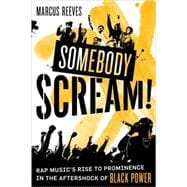
| Generation Remixed: Post-nationalism and the Black Culture Shuffle | p. 3 |
| The New Afro-Urban Movement: Rap Redefines the Voice of America's Chocolate Cities | p. 21 |
| Black Pop in a B-Boy Stance: Run-D.M.C. | p. 39 |
| Stumbling Through Black Power Revisited: Public Enemy | p. 63 |
| Niggas Selling Attitude: N.W.A | p. 93 |
| R-E-S-P-E-C-T in PC land: Salt-N-Pepa | p. 117 |
| Gangsta Chic: Dr. Dre and Snoop Dogg | p. 137 |
| The Myth of Thug Power: Tupac Shakur | p. 155 |
| Ghetto Fab Rising: The Notorious B.I.G. and Sean "Puffy" Combs | p. 177 |
| The Ice Age: Jay-Z | p. 203 |
| Dog Eat Dog: DMX | p. 223 |
| Vanilla Nice: Eminem | p. 245 |
| Keep On ... To the Break of Dawn | p. 269 |
| Notes | p. 279 |
| Bibliography | p. 287 |
| Acknowledgments | p. 297 |
| Index | p. 299 |
| Table of Contents provided by Blackwell. All Rights Reserved. |
The New copy of this book will include any supplemental materials advertised. Please check the title of the book to determine if it should include any access cards, study guides, lab manuals, CDs, etc.
The Used, Rental and eBook copies of this book are not guaranteed to include any supplemental materials. Typically, only the book itself is included. This is true even if the title states it includes any access cards, study guides, lab manuals, CDs, etc.
Excerpted from Somebody Scream!: Rap Music's Rise to Prominence in the Aftershock of Black Power by Marcus Reeves
All rights reserved by the original copyright owners. Excerpts are provided for display purposes only and may not be reproduced, reprinted or distributed without the written permission of the publisher.